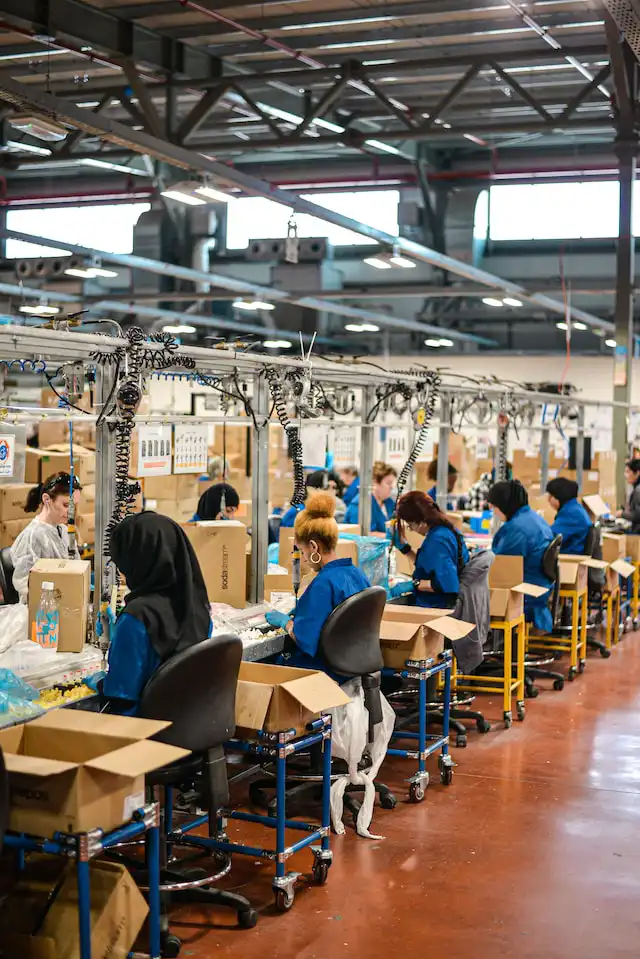
South Korea Cold Chain Market Outlook to 2023
By Cold Storage (Ambient, Chilled and Frozen Warehousing) and Cold Transport (Land, Sea and Air), By Application (Dairy Products, Fruits and Vegetables, Meat and Seafood, Pharmaceuticals and Others) and By Ownership (Integrated and Third Party Logistics)
Region:Asia
Author(s):Nishika Chowcharia
Product Code:KR917
November 2019
168
About the Report

South Korea Cold Chain Market Overview and Size
South Korea Cold Chain Market Segmentation
South Korea Cold Storage Market Segmentation
South Korea Cold Transport Market Segmentation
Competitive Landscape in South Korea Cold Chain Market
South Korea Cold Chain Market Future Outlook and Projections
Key Topics Covered in the Report
- South Korea Cold Chain Market Overview and Genesis
- Stakeholders in South Korea Cold Chain Market
- Value Chain Analysis of South Korea Cold Chain Market
- Infrastructural Analysis of South Korea
- Regional Analysis of Major Cities in South Korea (Seoul and Busan)
- Comparative Analysis of South Korea Cold Chain Market with other countries
- South Korea Cold Chain Market Size, 2013-2018
- South Korea Cold Chain Market Segmentation, 2013-2018
- South Korea Cold Chain Market Future Outlook and Projections, 2019E-2023E
- South Korea Cold Storage Market, 2013-2018
- South Korea Cold Storage Market Segmentation, 2013-2018
- South Korea Cold Storage Market Future Outlook and Projections, 2019E-2023E
- South Korea Cold Transport Market Size, 2013-2018
- South Korea Cold Transport Market Segmentation, 2013-2018
- South Korea Cold Transport Market Future Outlook and Projections, 2019E-2023E
- End-User Potential in South Korea Cold Chain Market
- Competitive Advantage for Setting up Cold Chain Facilities in South Korea
- Government Regulations in South Korea Cold Chain Market
- Growth Drivers and Trends in South Korea Cold Chain Market
- Issues and Challenges in South Korea Cold Chain Market
- Decision Making Process for Clients in South Korea Cold Chain Market
- SWOT Analysis of South Korea Cold Chain Market
- Competitive Landscape in South Korea Cold Chain Market
- Analyst Recommendations for South Korea Cold Chain Market
Products
Key Target Audience
Cold Chain Companies
Logistics Companies
Private Equity Investors
Government Associations
Construction Companies
Dairy Companies
Meat and Seafood Companies
Fruits and Vegetable Companies
Pharmaceutical Companies
Ice-Cream Companies
Time Period Captured in the Report
Historical Period: 2013-2018
Forecast Period: 2018-2023E
Companies
Key Segments Covered
Cold Storage
By Temperature
Frozen
Chilled
Ambient
By Region
North
Central
South
Cold Transport
By Mode of Transport
Land
Sea
Air
By Location
Domestic
International
By Mode of Land Transport
40 Footer reefers
20 Footer reefers
Others (6,8,10 wheelers and more)
By Vicinity
Inter-city
Intra-city
Meat and Seafood
Fruits and Vegetables
Pharmaceuticals/Healthcare
Dairy Products
Bakery and Confectionary
Others
Owned/Integrated
Third-Party Logistics (3PL)
Lotte Logistics
CJ Logistics
Dongwon Industrial
Borim Logistics
Dongbu Express
Hansol Logistics
DB Schenker
Daelim Corporation
GS Global
DHL
Ottogi Logistics Service Co., Ltd.
Pantos Logistics
Table of Contents
1. Executive Summary
2. Research Methodology
2.1. Market Definitions
2.2. Abbreviations
2.3. Market Size and Modeling
2.4Consolidated Research Approach
2.5Market Sizing Aproach– South Korea Cold Chain Market
2.6Sample Size Inclusion Table
2.7Limitations
2.8Final Conclusion
2.9Variable (Dependant and Independent)
2.10Multi Factor Based Sensitivity Model
3. Stakeholders in South Korea Cold Chain Market
4. South Korea Cold Chain Market Overview and Genesis
5. Value Chain Analysis for South Korea Cold Chain Market (Inter-Entity Relationship and Margin Analysis)
6. Infrastructural Analysis of South Korea
6.1. Road and Rail Network
6.2. Sea Network
6.3. Air Network
6.4. Free Economic Zone Infrastructure
7. Regional Analysis of Major Cities in South Korea (Seoul and Busan)
8. Comparative Analysis of South Korea Cold Chain Market with Cold Chain Markets in Other Countries, 2013-2018
9. South Korea Cold Chain Market Introduction
9.1. By Revenue, 2013-2018
9.2. Existing Technologies in South Korea Cold Storage Market
Radio Frequency Identification (RFID)
9.3. South Korea Cold Chain Market Segmentation
9.3.1. By Type of Market (Cold Storage and Cold Transport), 2013-2018
9.3.2. By End-User Application (Meat and Seafood, Fruits and Vegetables, Pharmaceuticals, Dairy
Products, Bakery and Confectionary and Others), 2013-2018
9.3.3. By Ownership (Owned and 3PL Cold Chain Facilities), 2013-2018
9.4. South Korea Cold Chain Market Future Outlook and Projections, 2018 – 2023E
9.4.1. By Type of Market (Cold Storage and Cold Transport), 2019E-2023E
9.4.2. By End-User Application (Meat and Seafood, Fruits and Vegetables, Pharmaceuticals, Dairy
Products, Bakery and Confectionary and Others), 2013-2018
9.4.1. By Ownership (Owned and 3PL Cold Chain Logistics), 2019E-2023E
9.4.2. Emerging Technologies in South Korea Cold Chain Market
10. South Korea Cold Storage Market
10.1. By Cold Storage Revenue and Number of warehouses, 2013-2018
10.2. South Korea Cold Storage Market Segmentation
10.2.1. By Ownership (Owned and 3pl Cold Storage Warehouses), 2018
10.2.2. By Temperature (Ambient, Chilled and Frozen), 2018
10.2.3. By Region (North, Central and South), 2018
10.1. South Korea Cold Storage Market Future Outlook and Projections, 2019E-2023E
10.1.1. By Ownership (Owned and 3PL Cold Storage Warehouses), 2019-2023E
10.1.2. By Temperature (Ambient, Chilled and Frozen), 2019E-2023E
10.1.3. By Region (North, Central and South), 2018
11. South Korea Cold Transport Market
11.1. By Cold Transport Revenue, 2013-2018
11.2. South Korea Cold Transport Market Segmentation
11.2.1. By Ownership (Owned and 3PLCold Transport Facilities), 2018
11.2.2. By Mode of Transport (Sea, Air, Land), 2018
11.2.3. By Mode of Land Transport (40 Footer Reefers, 20 Footer Reefers and Others), 2018
11.2.4. By Location (Domestic and International Cold Transport), 2018
11.2.5. By Vicinity (Inter-City and Intra-City Cold Transport), 2018
11.3. South Korea Cold Transport Market Future Outlook and Projections, 2019E-2023E
11.3.1. By Ownership (Owned and 3PLCold Transport Facilities), 2023E
11.3.2. By Mode of Transport (Sea, Air, Land), 2023E
11.3.3. By Mode of Land Transport (40 Footer Reefers, 20 Footer Reefers and Others), 2023E
11.3.4. By Location (Domestic and International Cold Transport), 2023E
12. End- User Potential in South Korea Cold Chain Market (Overview, Major Products, Major
Companies, Type of Storage Required, Temperature Range, Decision Making Factors for Clients,
Cold Storage Expenditure, Market Orientation, Preferred Location, Distribution Channels,
Facilities Required and Future Outlook, Market Size and Market Share of Companies)
12.1. Major Product Categories in South Korea Cold Chain Market
12.2. Meat and Seafood Industry
Requirements for Setting up a Cold Storage Warehouse for Meat and Seafood Products
12.3. Fruits and Vegetables Industry
12.4. Dairy Industry
12.5. Bakery and Confectionery Industry
12.6. Pharmaceutical Industry
12.7. Ideal Temperature Range for Cold Storage of Major Products in South Korea
Desirable Set-up Locations of Cold Storage Infrastructure Components
Factors Determining Cold Storage Design in South Korea
U-Flow Warehouse
Through Flow Warehouse
13. Competitive Advantage for setting up Cold Chain facilities in South Korea
Challenges Encountered By Cold Chain Companies in South Korea
14. Regulatory Scenario in South Korea Cold Chain Market
Incentives for foreign investors in free trade zones and free economic zones
15. Growth Drivers and Trends in South Korea Cold Chain Market
High Demand for Seafoods in the Country
Free Trade and Economic Zones
Increasing Pharmaceutical Industry in the Country
Surging in E-Commerce Logistics
Growth of Retail Sector
Rising Demand for Processed Food in the Country
16. Issues and Challenges in South Korea Cold Chain Market
Bases and Infrastructure are still insufficient
Irregularities in the Rules and Regulations Governing the industry
Lacking Technological Advancement
Inefficient Logistics Systems
Land and Space Utilization
Swift and various logistics services are relatively weak
17. Decision Making Process for Clients in South Korea Cold Chain Market
18. SWOT Analysis of South Korea Cold Chain Market
19. Competitive Landscape in South Korea Cold Chain Market
19.1. Competition Scenario in South Korea Cold Chain Market (Competition Stage, Major Players,
Competing Parameters)
19.2. Market Share of Major Players (Lotte Logistics, CJ Logistics, Dongwon Industrial Co.,
Ltd, Hanjin Corporation, Borim Logistics And Others, 2018
19.3. Cross Comparison of Major Players in South Korea Cold Chain Market (Basis of
Local/International, Number of Branches, Locations and Temperature Range Offered)
19.4. Company Profiles of Major Players in South Korea Cold Storage Market (Including Service
Portfolio, USP, Business Strategies, Business Strengths, Business Sectors, Logistics Hubs,
Insurance, IT System, Fleet Size, Minimum Lease for Shipping Centers, Clientele, Recent
Developments, Recognitions and Global Presence)
19.4.1. Lotte Global Logistics
19.4.2. CJ Logistics
19.4.3. Dongwon Industrial Co., Ltd
19.4.4. Borim Logistics
19.4.5. Dongbu Express
19.4.6. Hansol Logistics
19.4.7. Schenker Korea Ltd.
19.4.8. Daelim Corporation
19.4.9. GS Global
19.4.10. DHL Korea
19.4.11. Ottogi Logistics
19.4.12. Pantos Logistics
20. Analyst Recommendations for South Korea Cold Chain Market
Disclaimer Contact UsWhy Buy From Us?

What makes us stand out is that our consultants follows Robust, Refine and Result (RRR) methodology. i.e. Robust for clear definitions, approaches and sanity checking, Refine for differentiating respondents facts and opinions and Result for presenting data with story

We have set a benchmark in the industry by offering our clients with syndicated and customized market research reports featuring coverage of entire market as well as meticulous research and analyst insights.

While we don't replace traditional research, we flip the method upside down. Our dual approach of Top Bottom & Bottom Top ensures quality deliverable by not just verifying company fundamentals but also looking at the sector and macroeconomic factors.

With one step in the future, our research team constantly tries to show you the bigger picture. We help with some of the tough questions you may encounter along the way: How is the industry positioned? Best marketing channel? KPI's of competitors? By aligning every element, we help maximize success.

Our report gives you instant access to the answers and sources that other companies might choose to hide. We elaborate each steps of research methodology we have used and showcase you the sample size to earn your trust.

If you need any support, we are here! We pride ourselves on universe strength, data quality, and quick, friendly, and professional service.















